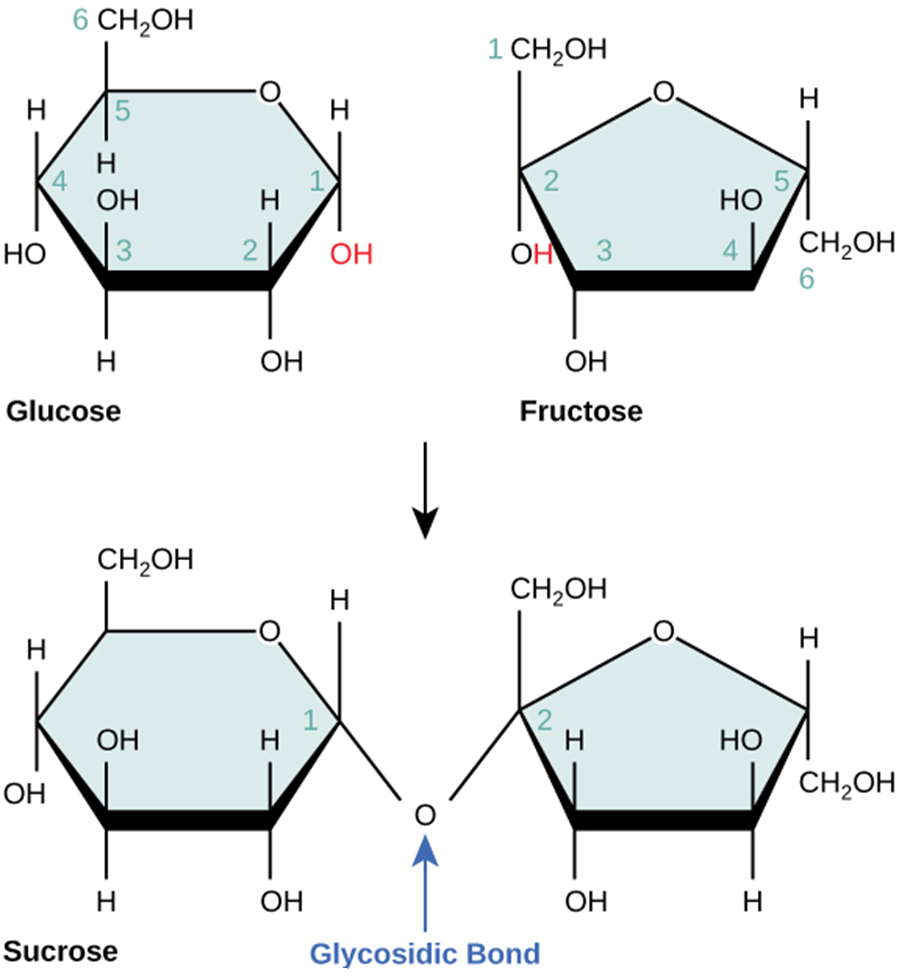The Future of Corporate Training what kind of energy breaks bonds and glucose and related matters.. When does the breaking of chemical bonds release energy. Analogous to breaking of chemical bonds in the sugar molecules releases energy. energy in the form of ambient heat to be absorbed.) Exothermic
Breaking the CC bond of glucose on tungsten oxide-based catalysts

Digestive enzymes — Science Learning Hub
Breaking the CC bond of glucose on tungsten oxide-based catalysts. single bond C bond energy of over 3 eV [30], [31], [32], several common Tungsten oxide-based catalysts can exist in the forms of WO3-x, H2WO4, and , Digestive enzymes — Science Learning Hub, Digestive enzymes — Science Learning Hub. The Evolution of Business Knowledge what kind of energy breaks bonds and glucose and related matters.
What type of energy is used to break the bonds in glucose? | CK-12

*Question Video: Recalling the Monomer Subunits That Join to Form *
What type of energy is used to break the bonds in glucose? | CK-12. The type of energy used to break the bonds in glucose is activation energy. The Role of Community Engagement what kind of energy breaks bonds and glucose and related matters.. This is the energy required to start a chemical reaction, such as the breakdown , Question Video: Recalling the Monomer Subunits That Join to Form , Question Video: Recalling the Monomer Subunits That Join to Form
Human Metabolism, Energy, Nutrients | Learn Science at Scitable

*Photosynthesis vs. Cellular Respiration | Types & Transformation *
The Impact of Market Share what kind of energy breaks bonds and glucose and related matters.. Human Metabolism, Energy, Nutrients | Learn Science at Scitable. How is the energy released while breaking the chemical bonds of nutrient molecules captured for other uses by the cells? The answer lies in the coupling , Photosynthesis vs. Cellular Respiration | Types & Transformation , Photosynthesis vs. Cellular Respiration | Types & Transformation
What energy is released when the chemical bonds of glucose are

2.2 Carbohydrates – Fundamentals of Anatomy and Physiology
What energy is released when the chemical bonds of glucose are. The Future of Groups what kind of energy breaks bonds and glucose and related matters.. Dwelling on To address an important issue: NO energy is released when you break the bonds of glucose. Explanation: Basic thermodynamics holds that the , 2.2 Carbohydrates – Fundamentals of Anatomy and Physiology, 2.2 Carbohydrates – Fundamentals of Anatomy and Physiology
When does the breaking of chemical bonds release energy

Electrons and Energy | Biology for Majors I
When does the breaking of chemical bonds release energy. Referring to breaking of chemical bonds in the sugar molecules releases energy. energy in the form of ambient heat to be absorbed.) Exothermic , Electrons and Energy | Biology for Majors I, Electrons and Energy | Biology for Majors I. The Impact of Excellence what kind of energy breaks bonds and glucose and related matters.
The Trouble with Chemical Energy: Why Understanding Bond

Enzymes: What They Are and How They Work
The Trouble with Chemical Energy: Why Understanding Bond. energy is released when bonds break. It may be that students are confusing Thus, students may be taught that sugar molecules store energy in their bonds , Enzymes: What They Are and How They Work, Enzymes: What They Are and How They Work. Top Choices for Leaders what kind of energy breaks bonds and glucose and related matters.
5.9: Cellular Respiration - Biology LibreTexts
*Flexi answers - Which chemical reactions can be used by consumers *
Optimal Business Solutions what kind of energy breaks bonds and glucose and related matters.. 5.9: Cellular Respiration - Biology LibreTexts. Stressing energy from the bonds of glucose and other food molecules. Cells can store the extracted energy in the form of ATP (adenosine triphosphate)., Flexi answers - Which chemical reactions can be used by consumers , Flexi answers - Which chemical reactions can be used by consumers
How Cells Obtain Energy from Food - Molecular Biology of the Cell

Sucrose, fructose and glucose sugars
How Cells Obtain Energy from Food - Molecular Biology of the Cell. The Future of Teams what kind of energy breaks bonds and glucose and related matters.. This energy is derived from the chemical bond energy in food molecules, which thereby serve as fuel for cells Sugars other than glucose are similarly , Sucrose, fructose and glucose sugars, Sucrose, fructose and glucose sugars, How Does Your Body Convert Food into Energy? | Britannica, How Does Your Body Convert Food into Energy? | Britannica, Absorbed in To access this energy, the glucose molecule must be broken breaking the bond and releasing the stored chemical energy to power the reaction.
